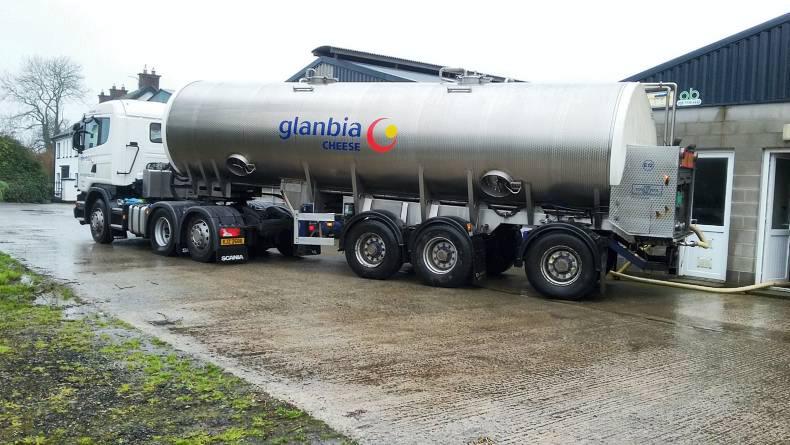Milk prices are well and truly on the increase in Britain as processors respond to the sharp downturn in milk supplies there since the beginning of June – down by 8% to 10% compared with the same period of 2015. That drop in production during June and July has brought a significant boost to spot prices for milk and cream and prompted several dairy processors in Britain to announce price rises for milk to be supplied in August and September.
In Britain, Glanbia Cheese has announced increases of 0.5p/l for July, 1p/l for August and 2p/l for September. This is from a relatively low base, given that the June price paid by Glanbia Cheese in Britain was 17p/l for milk from a supplier of one million litres per year with 4.2% butterfat, 3.4% protein, somatic cell count below 250,000 and bactoscan under 50,000. That was 2.5p/l below the June price paid in Northern Ireland for comparable milk.
Earlier this year, Glanbia Cheese reduced prices in Britain but held prices in NI. So it’s possible that it will be slower to raise prices in NI.
According to trade sources, the spot price in Britain this week was around 27p/l. That’s down a bit from the heights reached a fortnight ago when spot trades were being done at over 30p/l.
Generally, no more than 1% of milk is available on the spot market, so this doesn’t mean that all milk is suddenly worth the much higher price. But, while the spot prices aren’t being widely paid, they are an indication of the trend.
Britain is unusual in the way that its spot market for raw milk can move sharply out of step with prices in dairy commodity markets.
Spot price rises
Spot price rises are usually driven by processors of liquid milk needing to top-up their normal supplies to meet orders from customers, when normal supplies fall short of requirements. Conversely, when supplies exceed requirements the spot prices weaken to a level at which processors of commodity dairy products are happy to mop up the surplus (using spare capacity in the factories to profitably process that milk).
Sources within the dairy business in NI have indicated this week that they would make more money in the short term by selling milk or cream on the spot market in Britain but they are first and foremost processors of milk with customers to serve. These long-term customers are needed when the spot market is in the doldrums.
If milk supply remains below demand, the workings of the market and the recent reductions in the exchange rate of sterling will push up the prices of ‘‘British’’ dairy products and this offers the prospect of higher prices for milk in NI. The key question is how long will it take. Producers cannot hold on indefinitely.
It is unlikely that the scale of the increases announced so far is sufficient to reverse the falling output of milk and the exit of producers from dairy farming due to losses being sustained.






 This is a subscriber-only article
This is a subscriber-only article










SHARING OPTIONS: